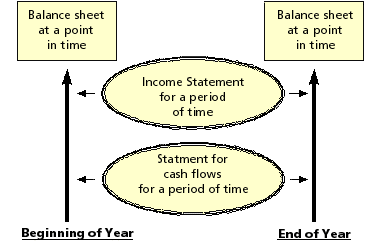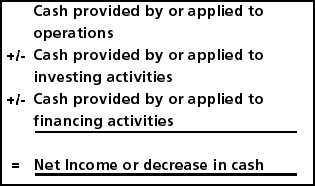
The Balance Sheet is a "snapshot" : it represents, at a moment in time, the financial position of the business entity. It needs to be compared to other "snapshots" to provide meaningful information on changes in financial position. For that reason, the balance sheet from the preceding year is usually provided.
The other primary financial statements --- the Income Statement and Statement of Cash Flows --- present a summary of activities over a period of time, usually a fiscal year. The Income Statement presents revenues less associated expenses and the resulting net income. The Statement of Cash Flows provides information about the sources and uses of cash.
The Balance Sheet (statement of Financial Condition) is so named

At any point in time this basic equation holds, although the amounts assigned to the individual elements will fluctuate.
Assets increase or decrease as resources are obtained, disposed of, become less valuable, or become used up (expensed) in the course of operations.
Liabilities increase or decrease as obligations are incurred or liquidated. In some cases, liabilities may need to be estimated and are subject to adjustment (upward or downward) in later periods.
Equity increases or decreases primarily as a result of income or loss from operations of the business. It also increases when the owners contribute capital to the business, and decreases when the capital is withdrawn or dividends are paid.
The Income Statement (or statement of Operations) is a tabulation of revenues and expenses, the latter usually, but not always,

Operating income is an important measure of the company's performance, since it represents the pre-tax income earned (or loss incurred) from the core operations of the business, before considering financial costs, other non-operating items, and extraordinary gains or losses.
Other income and expenses includes finance costs and other items the occurrence of which are tangential to the primary purposes of the business, (e.g., losses on abandoned or sold assets).
Net income or loss is the all-inclusive "bottom line" that reflects all economic activity by the enterprise for the period being reported on (year, quarter, month, etc.), except for transactions with owners.
The Statement of Cash Flows reports the sources and uses of cash

Operations include the cash effects of essentially all items identified in the income statement, such as sales, costs of sales, operating expenses and extraordinary items.
Investing activities include the purchase of plant, property and equipment or the proceeds from the disposition thereof, and also certain investments in securities or other non-operating assets.
Financing activities include the borrowing and repayment of debt, as well as the contribution and redemption of equity capital and the payment of dividends on the capital.
In addition to the basic financial statements, most financial reports done by Certified Public Accountant will have a section of Notes to the Financial Statements.
If a Certified Public Accountant has been associated with the financial statements, a report will be included with the statements. The report will identify what level of professional service was provided --- an audit, a review, or a compilation --- and indicate what conclusions, If any, were reached regarding the financial statements. An audit is conducted "in accordance with generally accepted auditing standards", a review or a compilation is conducted "in accordance with standards established by the Institute of Certified Public Accountants". These standards assure you that the service we provide meets all the stringent requirements of modern financial reporting. In the case of an audit, the C.P.A. will provide positive assurances that the financial statements "present fairly" the financial position and results of operations in accordance with generally accepted accounting principles, if it can be concluded that such is the case. In a review engagement, at best the accountant will express negative assurance --- i.e., that based on limited procedures no reason was found to doubt that the financial statements were fairly presented. An accountant conducting a compilation merely assembles the financial statements and offers neither positive nor negative assurances.
The notes to financial Statements set forth the major accounting principles used in developing the amounts reported in the statements (where a choice was made from alternative generally accepted accounting principles or GAAP), and also provide additional details about major accounts and transactions. Examples of the latter include details about long-term leases, long- and short-term debt (including interest rates and maturities), transaction with related parties, and contingent liabilities and commitments.
Financial reports may also contain supplementary schedules, which provide more detailed information about major expense captions (such as administrative expenses, costs of goods sold, other income and expenses, etc.) and other items appearing in the basic financial statements.
Pay With Credit Card
Actors, Musicians, Visual Artists & Writers visit: www.artstaxinfo.com
@ Copyright 1999-2025 Riley Business Services 978.463.9350 All Rights Reserved.